1:48SCALE PLASTIC KIT


intro
OneofthemostpopularandbestknownRussianaircrafteverbuiltwasbornin1933 Onthelastdayofthatyear,onDecember31,the famousSovietaviatorValerijTchalovconductedthemaidenflightofthenewCKB-12prototype TheCKB-12wasaverymodernand revolutionarydesignatthetime TheinstalledpowerplantwasaShvetsovM-22engine(alicensebuiltBristolJupiter)ratedat480hp, insteadoftheanticipatedShvetsovM-25enginegiving750hp ThatwasaSovietlicensebuiltWrightR-1820Cyclone Althoughthenew aircraft was a bit underpowered, Tchalov was amazed with its flight capabilities and especially its sensitivity of control The second prototypewasoutfittedwithanimportedoriginalWrightCycloneengine,andtheaircraftperformancegreatlyimproved Afternecessary developmentandimprovements,serialproductionwasorderedatZavod39inMoscowandatZavod21inGorkiundertheVVS(Soviet AirForce)designationI-16 TheseaircraftwereequippedwiththeM-22engine,becausethenewM-25powerplantwasnotyetavailable, andnoweaponswereinstalled MaximumspeedofthesefirstI-16swas362km/hatsealeveland346km/hat3000m Fiftyaircraftwere manufacturedatZavod39,knownasI-16withoutanyadditionalsuffixdesignation Zavod21producedthefirstbatchofI-16,thoughwith somedifficulties,becausethreeotheraircrafttypeswereontheirproductionlines Forthisreason,Zavod21´sI-16weresuffixedas„Type 4“ In late summer, 1934, the first aircraft reached VVS units Reception of the new aircraft was cool, to put it gently The flight characteristicswereverydifferentfromtheoperationalbiplanestheninservice;controlwasoverlysensitive,andthelandingspeedtoo highwithalackoffrontalviewduetothewidenose Thelackoflandingflaps,compensatedforbythedownwarddeflectionoftheailerons actingasflapsonlanding,didn´tmadethelandinganyeasier.Accidentratessoaredtounacceptablelevels,andreachedthepointwhere units couldn´t achieve operational status.At this time, five NII VVS (Air force research institute) pilots, Kokkinaki, Suprun, Preman, Evseev and Shevchenko, made a tour of air force bases.With their red painted I-16, they demonstrated the aircraft´s performance and potential. In late Spring, 1935, M-25 engine was finally available in sufficient quantities. The new engine received a new Watter type cowling,givingtheI-16itscharacteristicshape.Theflightcharacteristicswereunchanged,buttheperformancesignificantlyimproved. Themaximumspeedwasnow390km/hatsealevel,and445km/hat3000m.Theaircraftwasnowarmedwithtwo7,62mmShKAS machinegunsmountedinthewings.ByJanuary1936,theType5replacedtheType4ontheproductionlinesatZavod21.Stillafresh newcomeronthefighterscene,theI-16Type5soongotthechancetoshowtheirstuffinarealfight.DuringtheSpanishCivilWar,theI-16 builtitsgreatwarriorreputation Until1938,theType5remainedasthemainversion,marginallyupdatedtotheType6,butitisnotcertain if this was an official designation Besides Spain, theType 5 saw combat over China, where these aircraft were sent along with Soviet crews By 1937, initial troubles were forgotten, but new critics were found Therefore, the new and improvedType 10 was introduced, instigatingsomesignificantchanges First,thenewM-25V750hpenginewasinstalled Thewingwasre-designedtoincludelandingflaps Two7,62mmShKASmachinegunswereaddedontopoftheengine,withtwocorrespondingfairingsontheenginecowling Thecockpit was improved, and the canopy was completely redesigned, with an all-glass single piece windscreen ahead of a now open cockpit Maximumspeedwas390km/hatsealeveland438km/hat3200m TheType10´sproductionstartedatGorkiinMarch,1938 TheType 10reachedSpainaswellasChina,andfoughtagainsttheJapaneseoverChalkin-GolandChasanLake TheysawactionintheWinterWar againsttheFinns,andalsofoughtinPolandintheAutumnof1939 InJune,1941,whentheUSSRwasattackedbyGermanyandtheGreat Patrioticbegan,theI-16Type10remained,alongwithotherI-16versions,themainweaponofVVSfighterunits
Intotalsome9450I-16sofallversionswereproduced,mostofthem,tothetuneof8495,byZavod21atGorki Type10wasfollowed byimprovedversions,Type17,24and29
ThefirstI-16s,theTypes5and6,appearedinSpanishskiesinNovember1936 Republicangovernmentbought422I-16sfromSoviet Union,butonlyabout293aircraftwasdeliveredtotheSpanishhandsduetothevariousissues.TheI-16sexperiencedtheirbaptismoffire onthe13November1936,when12I-16s(Type5andType6)interceptedaNationalistbombingraidonMadrid.TheI-16simmediately begandominatingtheenemyHe51s,AradoAr68andFiatCR.32biplanesuntilthearrivaloftheMesserschmittBf109.
Combat experience showed the I-16´s weaknesses also; several aircraft were lost after structural failure of the wings, machine gun bulletscouldsometimespenetratethearmoredbackrestandfueltanksprotection.TheMediterraneanclimaterequiredmoreefficientoil radiators.Thedustshortenedthelifeoftheengines.Theinadequatelightarmamentofonlytwo7.62mm(0.30in)machineguns(three onesintheType6case)insufficientincombatwithmodernbombersledtothearrivalofthefour-gunType10.ThetotalnumberofI-16s deliveredtoSpainin1936-1938amountedto276.Bythewarendon1April1939thetotalof187RataswaslostinSpain:112intheaerial combat,oneshotdownbyanti-aircraftfire,11destroyedontheground,oneforce-landedand62lostinaccidents
AftertheNationalist'svictory22capturedRataswereassignedtoGrupo28 Theirnumberhadincreasedto52later Thefirst22captured I-16sactedasGrupo1W,thenthedesignationofgroupchangedtoGrupo28deCaza(FighterGroup) Thegroupwasbasedatairstation, San-Juanontheisland ofMajorca Bytheautumnof1940alltheI-16shadbeentransferredtoSevillawheretheyjoinedGrupo26
In1945theSpanishAirForceintroducedthenewsystemofdesignation RatasthenreceivedacodeC8insteadof1W Thenational insignia-Red/Yellowcocardeswereaddedtothesidesofthefuselage Ataboutthistime,Grupo26wasrenamedtoGrupo22
Intheearly1950's,thesurvivingI-16swereusedatafighterschoolinMorón.OnAugust15th,1953,MiguelEntrenaflewthelast serviceableI-16forthelasttimeandterminatedtheinterestingcareerofthe"Rata"intheSpanishsky

Carefully read instruction sheet before assembling. When you use glue or paint, do not use near open flame and use in well ventilated room. Keep out of reach of small children. Children must not be allowed to suck any part, or pull vinyl bag over the head.
Před započetím stavby si pečlivě prostudujte stavební návod. Při používání barev a lepidel pracujte v dobře větrané místnosti. Lepidla ani barvy nepoužívejte v blízkosti otevřeného ohně. Model není určen malým dětem, mohlo by dojít k požití drobných dílů.
INSTRUCTIONSIGNS
INSTRUKTIONSINNBILDEN INSTR.SYMBOLY SYMBOLES

























































































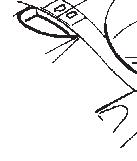









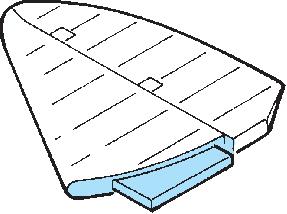














DO NOT GLUE ! NELEPIT!














F1 E10






















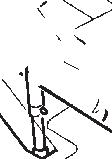



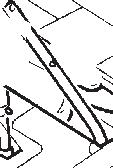









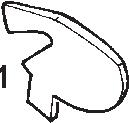







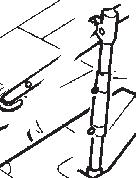























E37 E26
E31
F21
E36
E33
E32 E1



E8
E2
E36 E16
E33









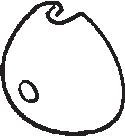


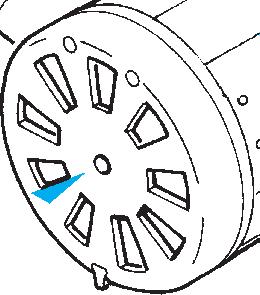









ABoris F. Safonov, 72. SAP, Northern fleet, Summer 1941
BorisF SafonovwasthefirstpilotservingwiththeSovietNavyawardedtheGoldStaroftheHerooftheSovietUnionduringthe GreatPatrioticWar(Sept.16,1941).Althoughthisaircraftwasonmanyoccasionsdepictedinvariousbooks,itremainsamystery.The left side is quite clear, but the right side has been described to varying degrees.We offer you two versions of the right side slogan. However,thecorrespondingleftsideslogan,inthiscase,isperhapsasimpleanderroneouseyewitnessflashback.Inourmind,there was nothing on the right side except the red star on the fuselage and the number 11 on the rudder.Themysterious slogan “SMERT FASIZMU”wasactuallypaintedontheleftsideofanotheraircraft,No.10,whichisalsonotedtohavebeenflownbySafonov There wasalsoathirdaircraftwithapatrioticslogan,No.13“ZASSSR!”Sowiththat,someoftheinterpretationwillhavetobeuptoyou.


Alternative right side slogans
Genadij Tsokolajev, 4.GIAP, Baltic fleet, lake Ladoga, april 1942
CaptainGenadijTsokolayevisanotherNavyacewith17individualand11sharedvictories.HewasawardedtheGoldStarofthe HerooftheSovietUniononJune14,1942.Itisnotcertain,iftheGuardsbadgewasinrealitypaintedonbothsidesofthefuselage. Also, the blue bottom surfaces are not definitely ascertained; it is possible the aircraft was light gray overall. Note missing undercarriagedoors.
www.eduard.com/s/8149

Lt. Krichevskiy, 254. IAP, Leningrad front, 1942
254.IAP(FighterAviationRegiment)wasanunitofthe8.SAD(MixedAirDivision),basedatBudogoshairfieldinthefortified Leningrad area in 1942.The aircraft was painted in a two-tone, pre-warVVS scheme, common in the early Great PatrioticWar months,withAIIGreenuppersurfacesandAIIBluelowersurfaces.Thepropellerbladeswereheavilyweathered.Notemissing undercarriagedoors.

Lev L. Shestakov, 69. IAP, Odessa, summer 1941
69.IAP(FighterAviationRegiment),laterrenamed9.GIAP(GuardFighterAviationRegiment),wascommandedbyaSpanish CivilWarveteran,LevShestakov,inthesummerof1941.TheregimenttookpartintheprotectionoftheimportantsouthUkrainian portofOdessaagainstadvancingGermanandRumaniantroops.LevShestakovwasanacewith7individualand8sharedvictories, withanotherthree(2+1),achievedinSpain.The9.GIAPgainednotorietylaterinthewar,afterre-equippingwithP-39Airacobras, duringtheBattleofKuban,underthecommandofthelegendary,three-timeHerooftheSovietUnion,A.I.Pokrishkin.

